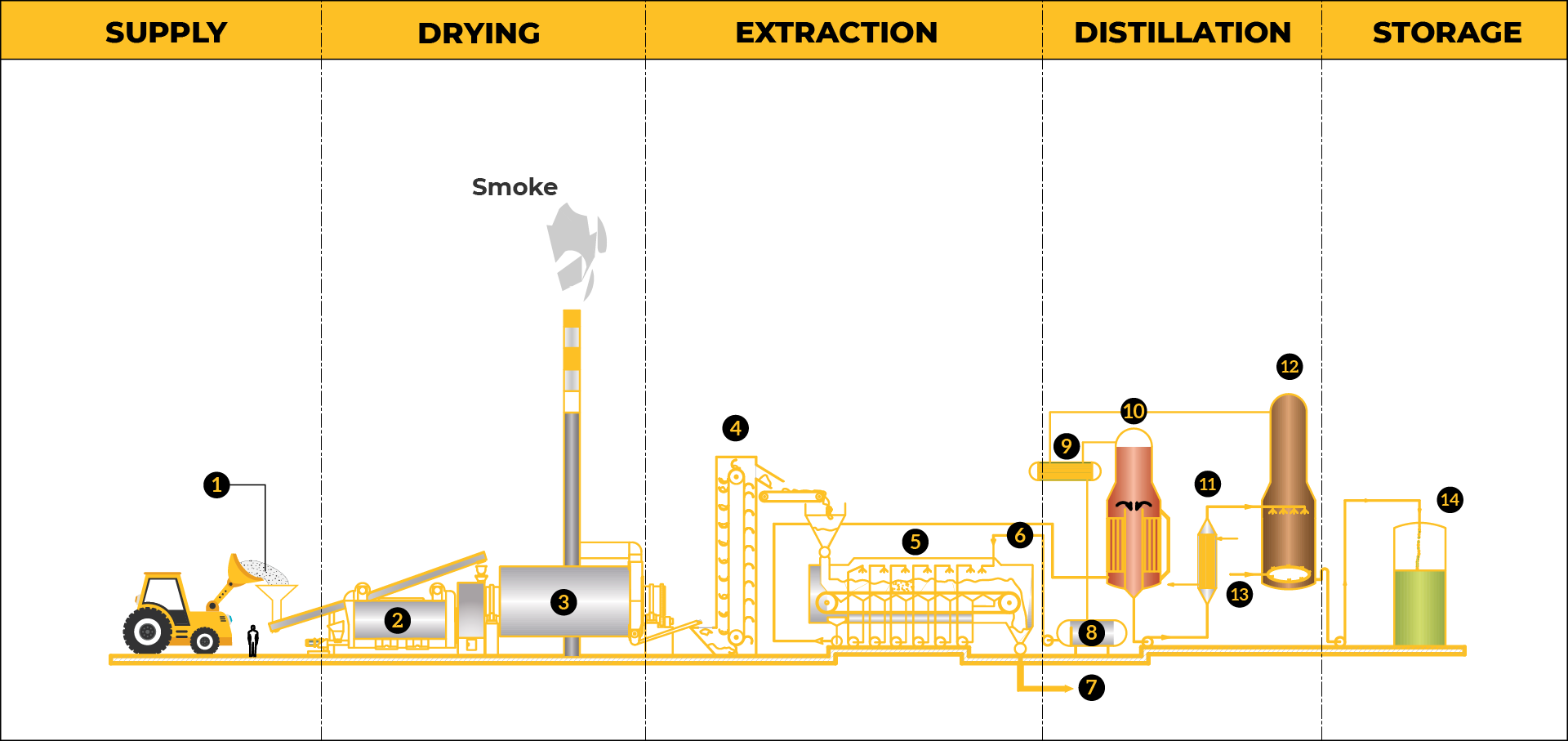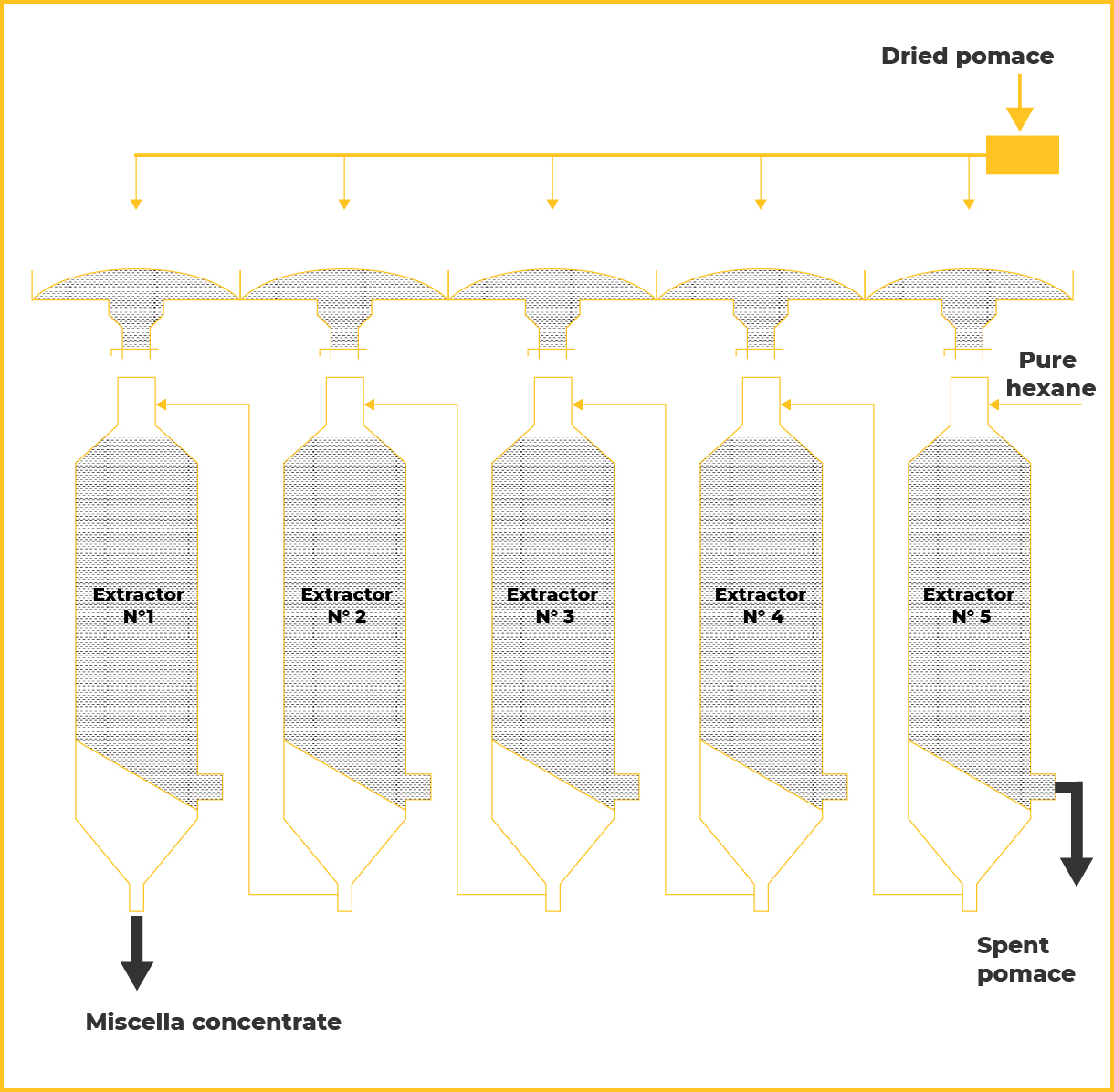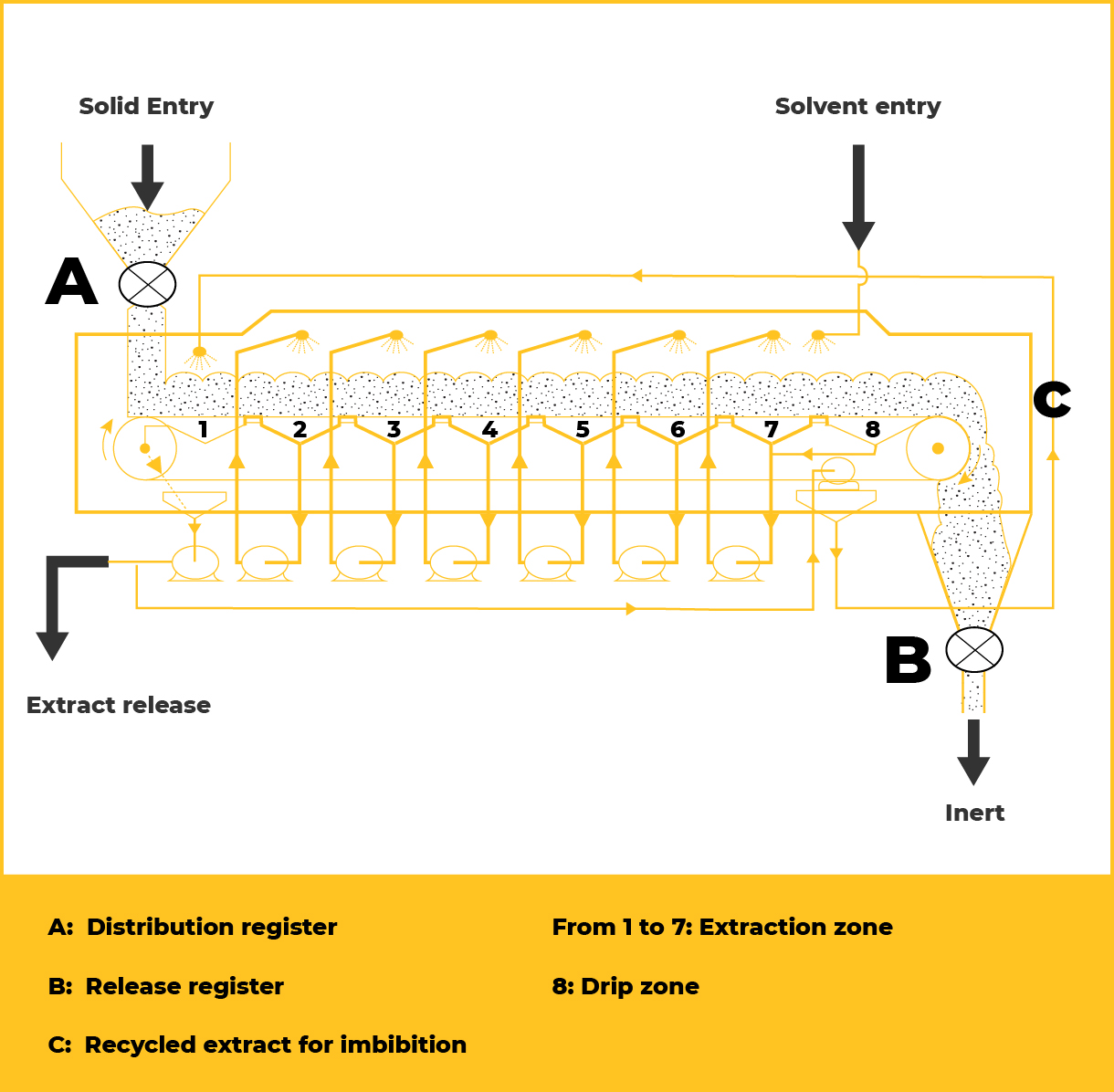Olive pomace is a by-product of the olive oil extraction process.
They are composed of residues of the pulp and fragments of the kernels. The residual oil is extracted by cold or solvent extraction.
This "crude olive-pomace oil" must then be refined to obtain a refined pomace oil. The extraction process consists of 4 steps detailed as follows :

The moist olive pomace is received from the various oil mills and is stored in the open air on surfaces designed to avoid any pollution of the environment by filtration as well as contamination of the pomace.
The purpose of drying is to allow the extraction operation and to interrupt the fermentation of the pomace in order to obtain a quality product.
The dryer consists of a hot air generator, an intermediate chamber and a rotating cylinder which rotates at a very slow speed (3 to 5 rpm).
The wet pomace passes inside the rotating cylinder by means of a conveyor belt. As it passes, a stream of hot air supplied by the generator passes along the cylinder to lower the humidity from 50% to 8%. To have a constant humidity value at the outlet of the dryer, three parameters must be respected :
⦁ Smoke temperature: Experimentally set (80 to 90 ° C).
⦁ Hot air temperature: Between 700 and 800 ° C.
⦁ Raw material flow: Stable during drying.
The solvent extraction of pomace oils is essentially carried out industrially by bringing the dried pomace into contact with the solvent.
This gives an oil and hexane solution called "miscella", the concentration of which varies according to the oil content of the oilseeds treated.
The extraction process can be done by two types of extractors, namely :
It is a sealed vertical cylindrical tank with a filter floor at the bottom, a loading port at the top and a discharge plug located laterally just at the level of the filter floor.
The use of several extractors in series aims to increase the extraction capacity as well as enrich the miscella.
Once the extractors are filled with pomace and then with hexane, the extraction operation begins by adding pure hexane to the first extractor from its upper part.
The oil enriched hexane exits from the first extractor to feed the second extractor and in the same way until arriving at the last extractor. The miscella recovered from the last extractor becomes more and more concentrated in oil and will be sent to the distillation stage.


The principle of continuous extraction is to ensure a continuous displacement of the dried pomace and that of the hexane, so that these pomace are regularly depleted in oil, while the hexane is transformed into more and more concentrated miscella.
This extractor is constructed of a metal casing 15m long, 2.5m wide and 4m high inside which slowly moves a perforated strip.
The pomace is distributed continuously on this conveyor belt. The hexane percolates through the bed using a spray bar dispenser to cover the entire section to browse. The miscellas of concentrations are collected at the bottom of the extractor.
Their circulation is effected by means of pumps and irrigation ramps, so that the miscella of any compartment is brought to the irrigation ramp located above the neighboring compartment in the opposite direction to that of the displacement of the belt. A counter-current circulation is thus achieved.
Knowing that hexane evaporates from 70 ° C, the miscella, after filtration and concentration, is subjected to the action of heat in a vacuum evaporator at a temperature of 90 to 100 ° C. It then passes through a finishing column also under vacuum at a temperature of 110 to 120 ° C comprising an injection of steam to remove the last traces of hexane. The vapors thus produced are condensed in conventional tubular exchangers and the oil obtained is cooled and then stored.
The condensed hexane is collected in a separator where it is freed from the water from the injected steam and the moisture from the dried pomace.